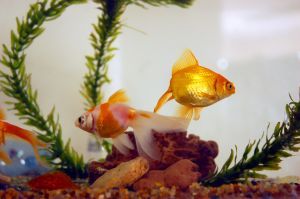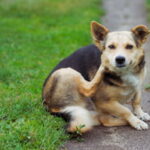Growing up with a pet can be a wonderful experience for a kid. As a child we always had family pets like fish, a dog, a couple of cats, and even a couple of small rodents along the way. Pets can help your children build a sense of responsibility and independence as well as teach discipline and nurturing skills. If you get the wrong pet for your child it may end up being neglected or worse. There are lots of pets that are great for kids and there are lots that may not be a good choice for your family. Learn how to bring a pet into your family and how to choose the right pet.
Whether you are considering purchasing a cat, dog, hamster, bird, reptile, or other pet you should first be aware that ANY pet is a huge responsibility. When you adopt or purchase an animal you are taking responsibility for its life. This may not be an idea that children grasp right away but any adult with children should be able to understand this. Pets require daily care, love, attention, and exercise. Depending on the pet you choose your child may have a hard time keeping up with the pets needs.
When considering purchasing a pet for your child it is best to start out small and work upward. Small pets like fish, birds, hamsters, and guinea pigs are all great for beginners. Each of these small pets are easy to care for, don’t take up much space, and don’t need much attention. If you are looking for a more traditional pet; cats, dogs, and rabbits are all good choices but will require more attention than smaller pets.
When searching for the perfect family pet DO NOT BUY ON IMPULSE and DO NOT GIVE PETS AS GIFTS. Most pets require at least a 10 year commitment and some animals live as long as 20 years. Buying a pet is not something you can do on a whim. You should first learn everything about the pet you want before buying. Giving pets as gifts often turns out badly as well. For one, the pet could be unwanted and neglected, it could just be bad timing, someone could be allergic, or you may become overwhelmed by how much care the animal actually requires. As always you should learn as much as possible before you ever go to the pet store or breeder.
If you’re child has really been bothering you about getting a pet for their birthday or Christmas; DO NOT GIVE IN. Lots of animal shelters, pet stores, and breeders won’t sell or adopt their animals during holidays because they want to avoid the unwanted “gift” ending up in a shelter. Instead give pet supplies like food dishes, a cage, or toys as gifts in preparation of picking out a family pet.
Of course, if you are specifically buying the pet for your child you should discuss the responsibilities of caring for it. Before actually picking out the new family pet you should also discuss how big it’s going to be, how much care it’s going to need, what typical supplies you will need, and who is going to be the main caregiver. There’s nothing worse than having a pet for a couple of weeks and then finding out its sick because your child didn’t take care of it properly. In most cases, an adult is going to have to watch over the child and pet to make sure everything is getting done that needs to be.
These pets generally are NOT GOOD FOR CHILDREN or families:
- Ferrets and chinchillas- Tends to nip at little fingers and roughhousing with children can make the animal feel afraid and want to attack. Ferret bites can easily lead to infection.
- Monkeys- Illegal in many states and requires too much care.
- Snakes- Dangerous to any person who doesn’t know what they are doing. Some have poisonous venom.
- Iguanas- Too large; can grow to be 6 feet. Can be aggressive after reaching maturity. Risk of salmonella poisoning.
- Turtles- Too large; can be over 50 lbs. Some species live longer than 20 years. Risk of salmonella poisoning.
- Doberman pinscher, Dalmatian, or Great Dane- Too large; weighs over 50 lbs., highly active, bites can be severe.
- Pit-bull or Rottweilers- Very aggressive and strong. Bites can be severe. Weight over 50 lbs.
- Terriers and Chihuahuas-Too active and need lots of attention.
The following pets are GREAT FOR KIDS and families:
- Almost ANY cat (really depends on cats personality)
- Some small breed dogs and many medium breeds
- Rabbits, guinea pigs, hamsters, mice, and gerbils.
- Small birds
- Aquarium fish
When it comes to any pet you should first learn as much as possible BEFORE buying. You will be responsible for teaching your child how to handle and care for the pet. Remember to wash your hands after handling any pet.
DOGS
When it comes to dogs most people will tell you Golden or Labrador Retrievers are the best family pets. But don’t be fooled by a name. Because these two breeds are often over bred they can develop behavioral or neurological problems and health issues due to poor breed standards. These troubles can make it hard to own a Golden Retriever or Labrador that is safe around children. If you are considering this breed it is best to buy from a reputable breeder rather than a pet store or flea market.
There are lots of other breeds of dogs that are good for children. Size is usually the number one factor that determines what kind of dog you will buy. But, don’t think size alone is a good way to measure if the dog is good for your family and child. Many small breeds are not good with children because they tend to be hyperactive, nervous, and will bite when feeling threatened or scared. Of course any dog over 50 lbs could be a possible danger to a child but this is not always the case. Some dogs are gentle giants.
Of all the pets to choose, a dog will require the most care and attention so keep this in mind when shopping. The Maltese and Pug are two small breeds I recommend for children. The Maltese will require daily grooming and should be supervised when playing with children. Maltese have very small legs that can be broken easily but generally like children. I have never met a mean Maltese or Pug. The pug is a lovable and fun dog to own. You must supervise play as well with this breed as its bulging eyes could be injured in a second.
An adult boxer is a peaceful and calm dog and will make a great addition to almost any family. When boxers are puppies they tend to be a bit jumpy which can scare kids. It is best to get an adult if considering this breed. Beagles are also good as they are not known to be aggressive and they are highly trainable. Border Collies like Lassie are also great family pets as they are loyal, trustworthy, and affectionate.
FISH
Fish are one of the easiest pets to care for and do not require much attention. Of course this pet will require close adult supervision when children are near. If you are considering buying fish the best system to start with is a filtered tank with heat and lights. An unfiltered bowl will have to be cleaned every couple of days which can be too much for many children. A 20 gallon tank is a good starter size.
Avoid goldfish because they create more waste and need to be cleaned up after much more often. The best fish for children are African Cichlids because they require almost no daily care. Of course you should teach your children to feed the fish daily but if a day or two is missed it’s no big deal. Most Cichlids can survive up to two weeks without food. Younger children may find it difficult to care for fish so it is suggested fish be a pet for children ages 7-12. Be aware if the fish are fed too much it will change the PH of the water and may cause the fish to become ill, and may even result in death.
Fish are very quiet, they don’t bother neighbors with unruly barking, they don’t knock over trash cans, they don’t jump in your dinner, they don’t bite the hand that feeds them, and maintenance is relatively cheap and easy.
BIRDS
Of the bird family, there are only a few that are good for children. Finches and Canaries are the best and easiest to care for. If buying these birds for your children get two or more so they can keep each other company. These birds do experience loneliness. Finches shouldn’t be handled because you risk spreading salmonella. There are over 20 different species of finches in all colors.
If you’re looking for a bird that can be easily and safely handled by your child you may want to bear in mind the Parakeet or what is known as a Budgie. Parakeets tolerate being handled and may even learn to “talk” or imitate sounds. The parakeet is a great companion bird and most are relatively good natured. Caring for this bird is simple and cheap. They may even be trained to sit on a finger.
If your child is a little more experienced with birds you may also consider a Cockatiel. This is a larger species of bird that can talk, whistle, and imitate sounds. Cockatiels love to be out of the cage but need to be supervised by an adult when free roaming. Because this bird is more than a pet it should only be thought of for a kid that’s highly interested in birds. Cockatiels often tend to “scream” and peck so only knowledgeable people should adopt this kind of bird.
For all birds it is important to get a large enough cage. Typically a 24x16x16 cage is large enough to get started with one bird. Remember to get seed cups, water dishes, a perch, a swing, and the bottom of the cage should have a tray. When you first get a bird it is important to let it adjust to it’s new surroundings. This may take up to 7 days so be patient. All birds are greatly affected by things like cigarette smoke, hairspray, aerosol air freshener, and other air pollutants. Be cautious using these things in your home and keep them away from your birds.
RABBITS AND RODENTS
Rabbits and rodents are also extremely easy to care for and make a great childhood pet. If purchasing a rabbit it is important not to house them with other animals. Some people think it’s okay to house a rabbit with a guinea pig or gerbil. This is NOT TRUE. Other than having different diets rabbits easily become the bully and make other animals scared when housed together. All rabbits and rodents need fresh food and water 24 hours a day so this may not be the best pet for young children. I recommend ages 9-13 for pets like this as older children can grasp the idea that the animal needs daily care. Substrates should also be cleaned or changed everyday.
Rabbits and rodents tolerate being handled by children and sometimes are very affectionate. Rabbits and Guinea Pigs are very sociable and will become lonely if not paid attention to. Rodents like mice, rats, and hamsters will get along just fine if no one pays them any attention. Like most pets rabbits and rodents should get daily exercise or they will become overweight and lethargic.
CATS
When it comes to cats and children it is usually best to start out with a kitten. I say this because many adult cats show aggression (at least males) and often don’t want to be handled. It is not rare for an adult cat to be aggressive with a child, or to nip and scratch. Cats are generally good for any child over the age of 5 years. Like a dog, cats need daily care. Litter boxes have to be cleaned, fresh food must be available daily, and fresh water must be accessible 24 hours a day.
Kittens are very playful and will make a great companion for children ages 5-10. Most teens aren’t interested in having a cat or taking care of it. Because adult cats are very independent and they reach maturity at about 1 ½- 2 years they don’t require much attention. If your kid forgets about the cat when he becomes a teen don’t worry too much; cats can take care of themselves.
Of course, all pets are a huge responsibility and should be treated as so. Getting your child a pet can help teach them responsibility, maturity, about life and death, and they will gain high self esteem, discipline, and respect. Before getting any pet thoroughly discuss your options and learn everything you can. There are lots of pets out there that are great for kids! Help them choose the right pet not only for themselves, but for your family as well. Good luck!







